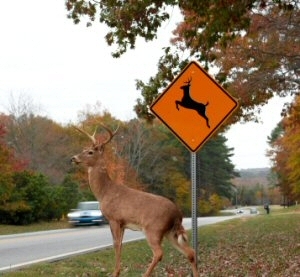 William M. Sparks 1945 - 2023
William M. Sparks 1945 - 2023
My father, William (Bill) Sparks, passed away sadly but comfortably Sunday morning, surrounded by his family. He was a kind and loving man with a heart of gold. There are so many who loved him and will feel this loss – in the business world and far beyond. He would say thank you to all of his small-business customer for their support, and he would wish everyone peace and happiness. I have run the William M. Sparks Insurance Agency for many years now, and I will continue to run it just as my father did and as he would want me to do. On behalf of my family, I thank you all for your kind words, well wishes and support at this time. --- Danielle Sparks
No matter where you drive – from rural roads to suburban streets and even highways around our cities – the threat of a collision with a deer is real.
Deer collision accidents are on the rise, partially because the deer are being displaced from their natural habitat by urban sprawl but also because the deer population is growing.
In fact, the Insurance Information Institute reports that over 1 .6 million deer-vehicle collisions occur each year and these accidents cause vehicle damage, injuries and even fatalities at a cost in the neighborhood of $4.6 billion.
A Few Facts…
- Deer collisions are most likely to occur during deer breeding season – from October through early January.
- Prime times to find deer near the roadside are around dawn and from dusk to late evening.
- Deer are pack animals. So if you see one, be assured that others are usually close by.
Deer Season Driving Tips
- Always wear your seatbelt – Sixty percent of fatal animal crashes occurred when the driver was not wearing a seatbelt.
- Know the likely deer-crossing zones – Whether or not a road is marked with a Deer Crossing Sign, be especially alert for deer when driving on roads or highways on the outskirts of town and in rural areas – especially where roads divide farm land from wooded land. Use your high beams – When driving at night, especially during peak hazard times, use your high-beam headlights when there is no on-coming traffic. This won’t necessarily deter the deer from entering the roadway, but it will increase visibility so that you can more easily spot the deer sooner.
- Know when deer are on the move – Be especially careful between 5AM and 8AM and between 5PM and midnight.
- Don’t rely on devices – Items like deer whistles, deer fences and reflectors have not been proven effective at deterring deer crossing roadways.
- Brake firmly if you notice a deer near the road – Slow down and stop if necessary. Be careful not to swerve out of your lane either into on-coming traffic or off the shoulder and into a ditch.
- Keep your distance – If you do strike a deer, don’t approach it. An injured deer is frightened and can injure you as well as further injuring itself. If the deer is blocking the roadway, it poses a threat to other drivers; so call the authorities immediately.
- Contact your insurance agent – If you strike a deer and have damage to your vehicle or damage to some else’s property, notify your insurance representative as soon as possible and provide the necessary details.
Tag Cloud

|
|
 |




